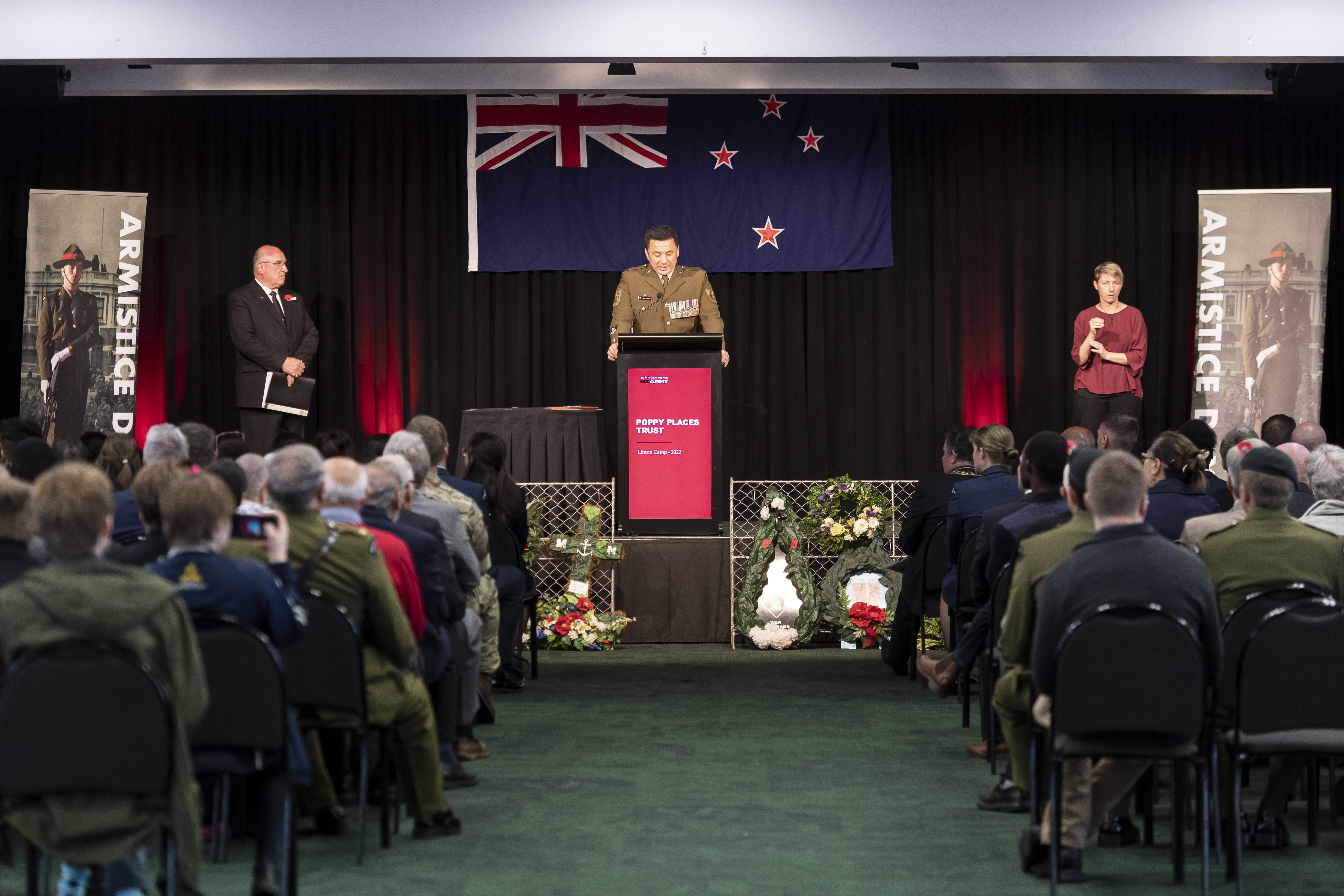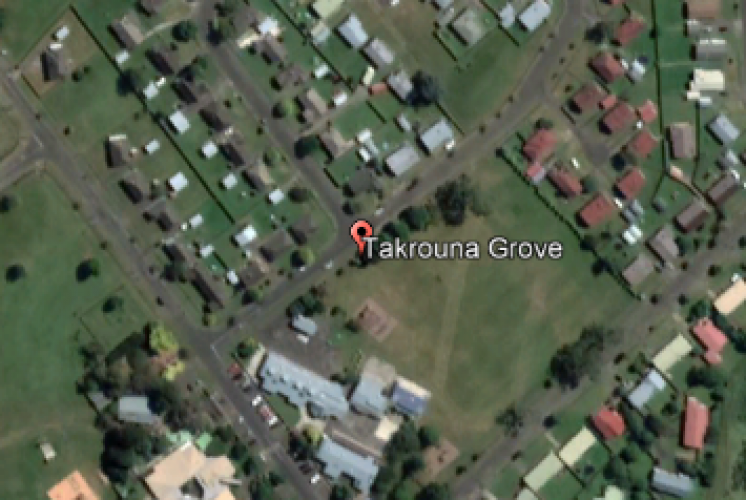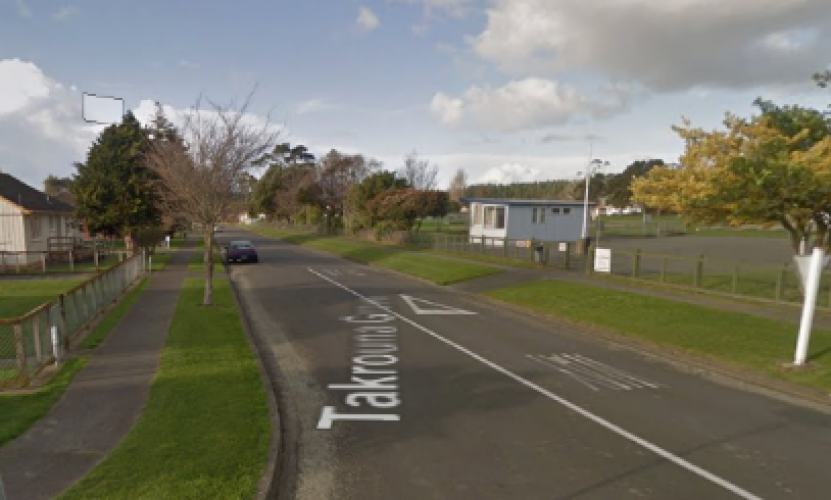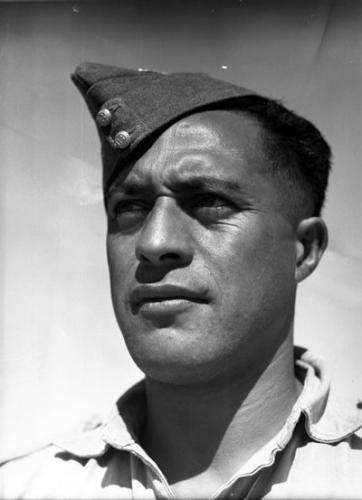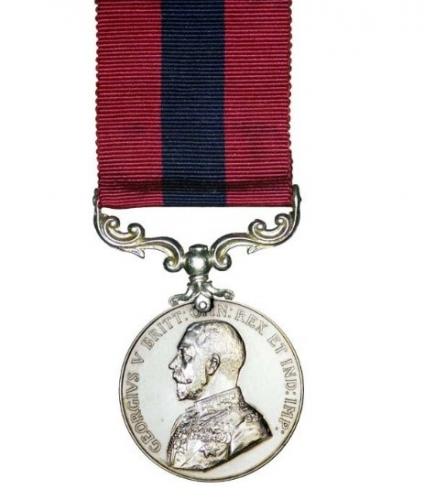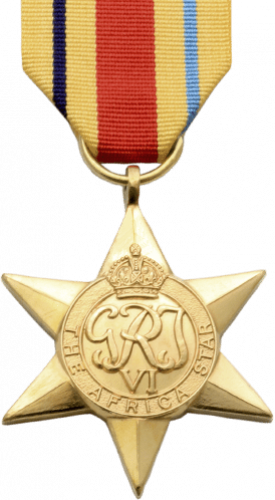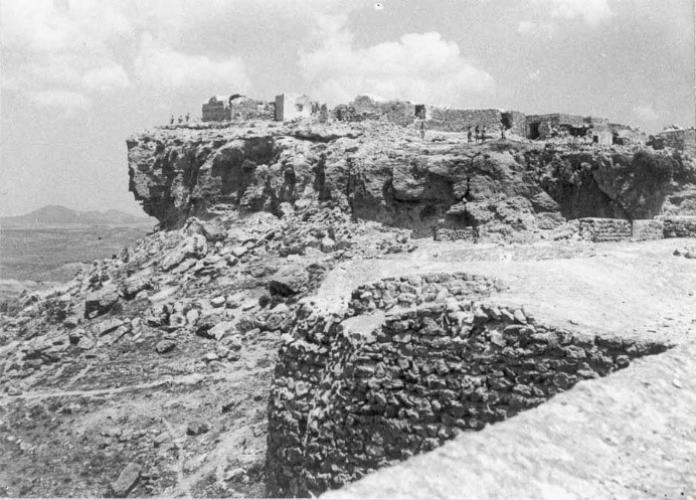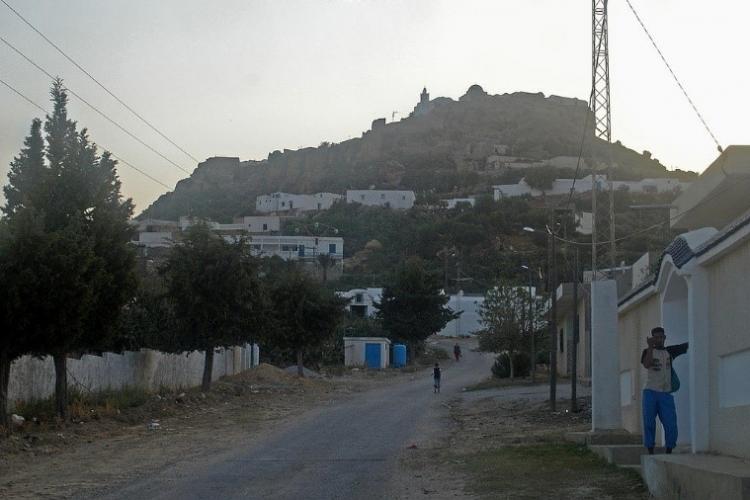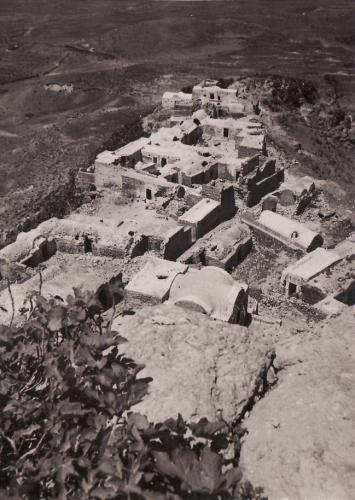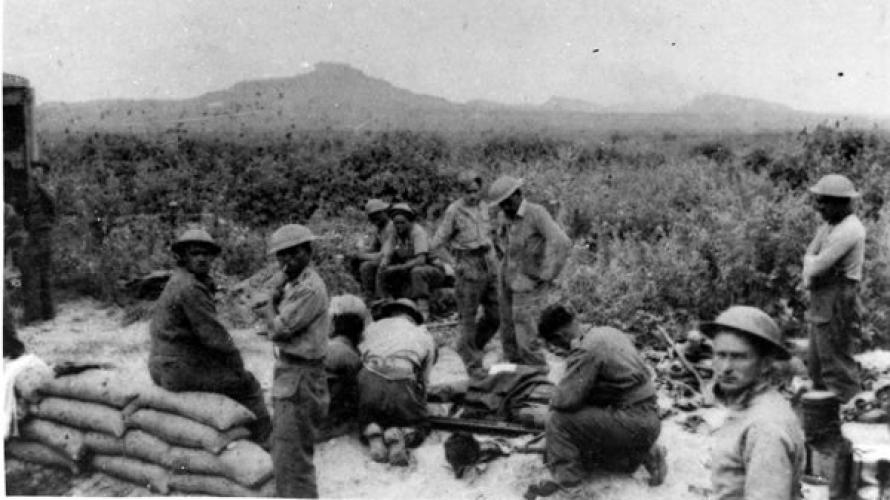279 Takrouna Grove Linton Military Camp Palmerston North, street scene 2019
Reason for the name
This street in Linton Camp is named as a tribute to those involved in the battle of Takrouna, Tunisia during World War 2. Most streets within NZDF Camps and Bases are named in honour of prominent people, battles, campaigns, ships, aircraft and places creating a rich history of our military service.
The dominating feature of Takrouna was attacked by 5th (NZ) Brigade in April 1943. After three days fierce fighting, the summit was captured by a small band of men, including Sergeant Haane Manahi 28th (Maori) Battalion and Sergeant Walter Smith 23 Battalion, both of whom received a DCM for their part in the battle. Over 500 Zealanders were killed or wounded during the battle, mostly from land mines in the fields below the rocky hill. Takrouna would be the last major action fought by the New Zealand Division during the North African campaign.
Author: The Poppy Places Trust
Despite the success at Tebaga Gap Axis forces managed to withdraw from the Mareth Line and slipped away to the north. Hemmed into a small area of northern Tunisia, they took up defensive positions in the rocky terrain around Enfidaville, some 100 km south of Tunis.
On 19-20 April 1943 the New Zealand Division set off to clear the foothills between Enfidaville and Takrouna. While the 6th (NZ) Brigade, on the right, achieved its objectives without too much difficulty, the 5th (NZ) Brigade suffered heavy casualties as it pushed forward in an area dominated by Takrouna, an outcrop of rock rising steeply from the plain at the end of a ridge. Troops from 28th (Maori) Battalion managed to scale the heights and seized the summit after fierce fighting. Determined counter-attacks forced the New Zealanders off Takrouna but it was retaken on 21 April by a small group led by Sergeant Haane Manahi.
Men from other units also joined the assault, including Sergeant Walter Smith (23 Battalion), who used telephone cables to pull himself up to Takrouna's main ridge. One senior British commander described this action as ‘the most gallant feat of arms’ he saw during the war. Smith received a DCM for his part in the battle. Manahi was recommended for a VC but was instead awarded a DCM.
Takrouna was the New Zealand Division’s last major action in North Africa. On 13 May 1943 around 238,000 Germans and Italians laid down their arms. As temporary corps commander, Freyberg accepted the surrender of Marshal Giovanni Messe, commander of the 1st Italian Army, and Major General Kurt von Liebenstein, commander of the German 164th Light Afrika Division.
Hitler's belated decision to throw huge resources into holding Tunisia magnified the cost of defeat in North Africa for the Axis, even if those forces had extended the campaign by four or five months. Had Rommel been given these resources in July 1942 he might well have been victorious.
The New Zealanders did not have long to savour the victory in Tunisia. On 15 May the first units began their nearly 3000 km drive back to Egypt, reflecting on battles fought and comrades lost. The last of the New Zealand Division reached Cairo on 1 June, cramming into camps at Maadi and Helwan. For 6000 of the longest-serving men, there was the prospect of an early return to New Zealand: they learned that they would go home on a three-month furlough.
Geoffrey Manahi explains who Haane Manahi is, what happened at Takrouna, and the reason for Haane Manahi’s success that led to his nomination for the Victoria Cross.
Haane Te Rauawa Manahi was one of the warriors of the iwi of Te Arawa. At the beginning of the Second World War, Manahi went off to fight in the 28th Māori Battalion.
My thoughts return to the time my father Haane fought at the place known as Takrouna, in Tunisia. At that time, the 28th Māori Battalion was camped at the base of the hill at Takrouna, on top of the hill were 400 Germans and Italians, while at the bottom, the Māori side thought they could capture the hill.
The order was given to lay siege in order to take this important landmark of Takrouna. Because of the intense mortar bombardment and withering small arms fire, progress was difficult and dangerous, and after the first assault, there were only 10 left in Manahi’s platoon. There had been around 30 at the start.
At that time, according to the account given by my father, Te Makawe appeared. Te Makawe is a spirit guide belonging to this people of Ngāti Whakaue. When my father saw that spirit guide in the heavens, it was in the form of a rainbow. The spirit guide at the time was leading my father and the others of the 28th Māori Battalion through the minefield to the mountain. Te Makawe led them on so they could make the right approach, in order to get up on the mountain to the place where the Germans and Italians were.
When the warriors of the 28th Māori Battalion B company came back here to Tamatekapua marae (in Rotorua), my father went up on to the hill behind, to Pukeroa. That is the dwelling place for the guardian Te Makawe, where he stands – a tree.
Then my father said his prayers. It was because of Te Makawe that my father survived the Second World War.
‘Of all the magnificent achievements of 2 NZ Div. I have always felt that the capture of Takrouna must surely have been one of the finest. I went up there myself during the battle just after the 51st Highland Division had taken over, and I cannot, to this day, imagine how it was captured in the face of tenacious enemy resistance.’
Lieutenant-General Sir Brian Horrocks, KCB, MC

